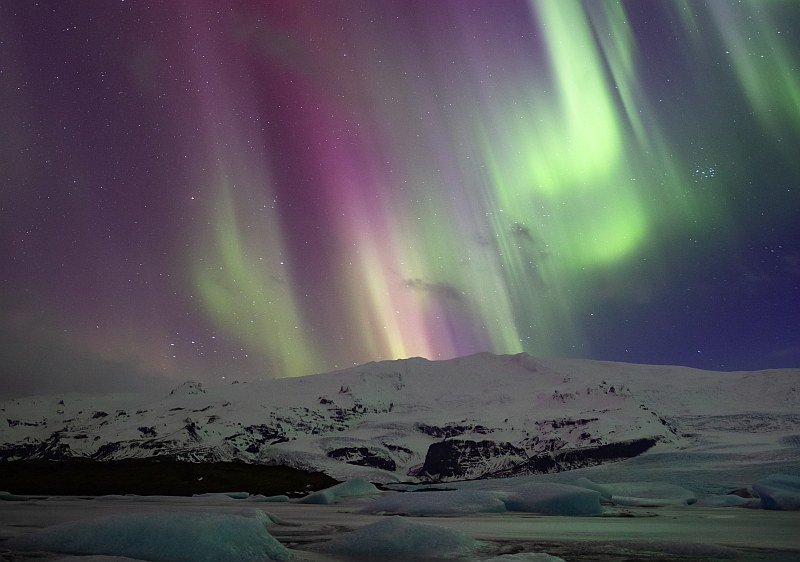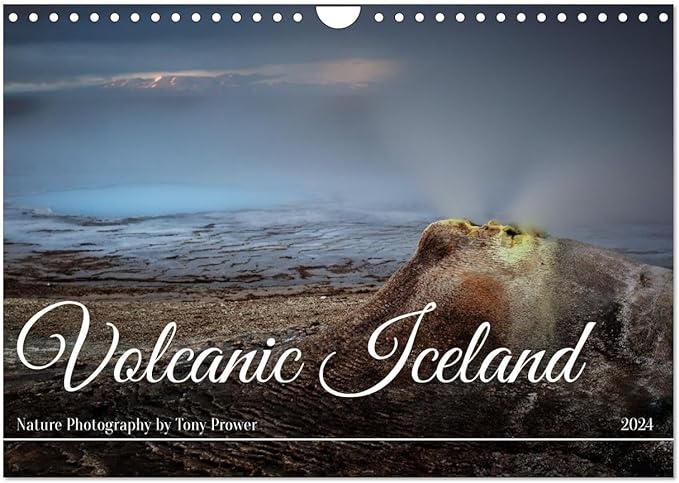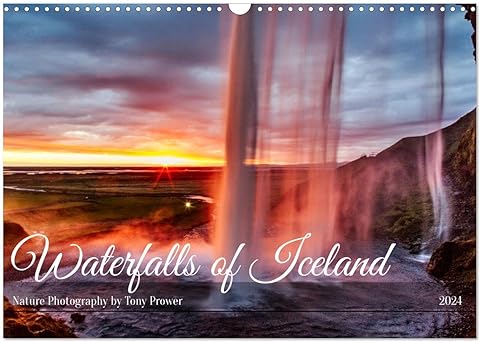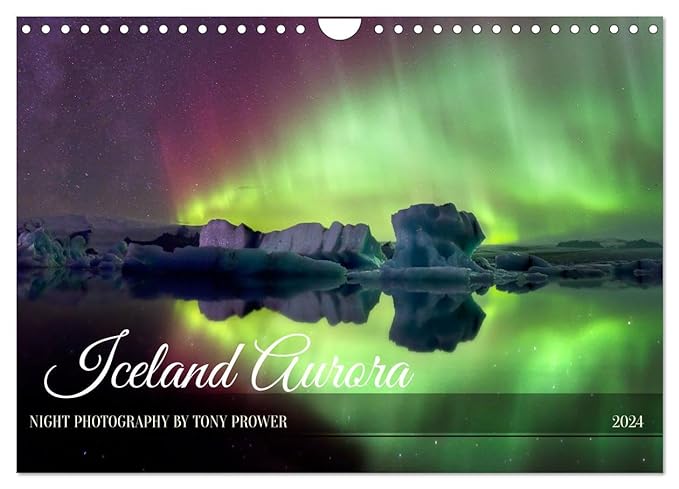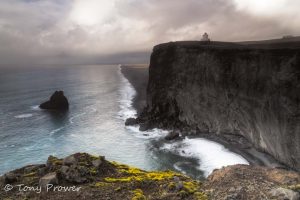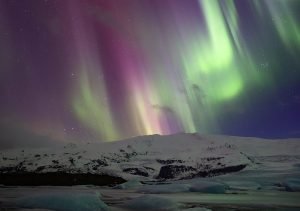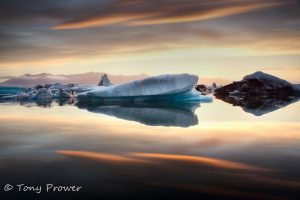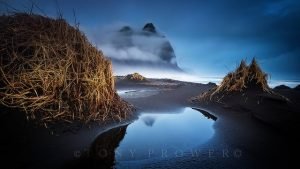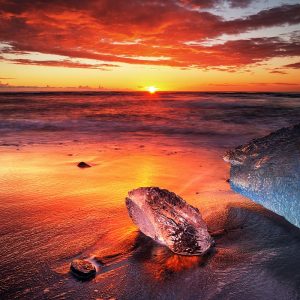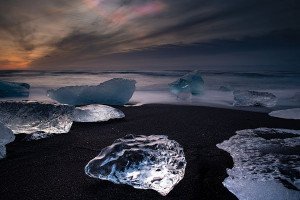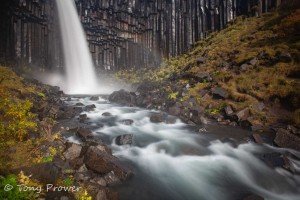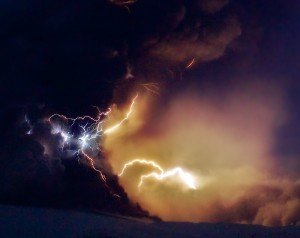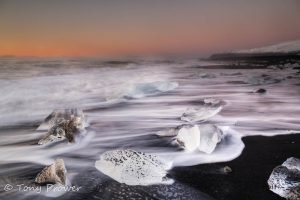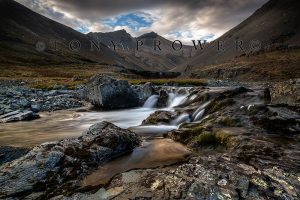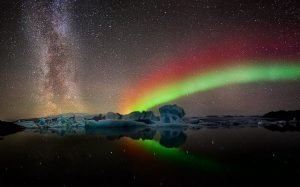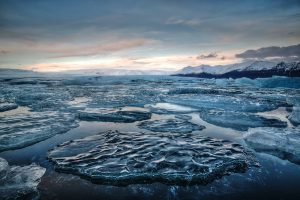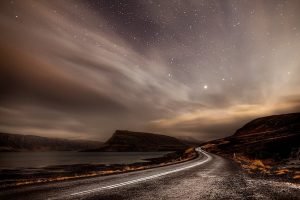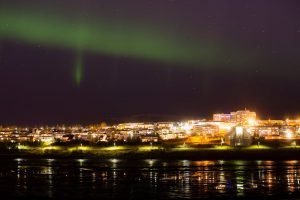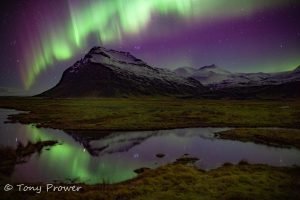Night Photography
This stunning vertical photo was taken on the 17th March 2016 at a glacier lagoon in East Iceland. The Aurora Borealis was active all night and was visible in all directions. This gave our group the chance to capture dozens of photos over a couple of hours. Sometimes, Aurora photography is rushed because you don’t know how long it is going to last. In order to guarantee a result, you just point you camera in the general direction of the lights without much thought about composition.
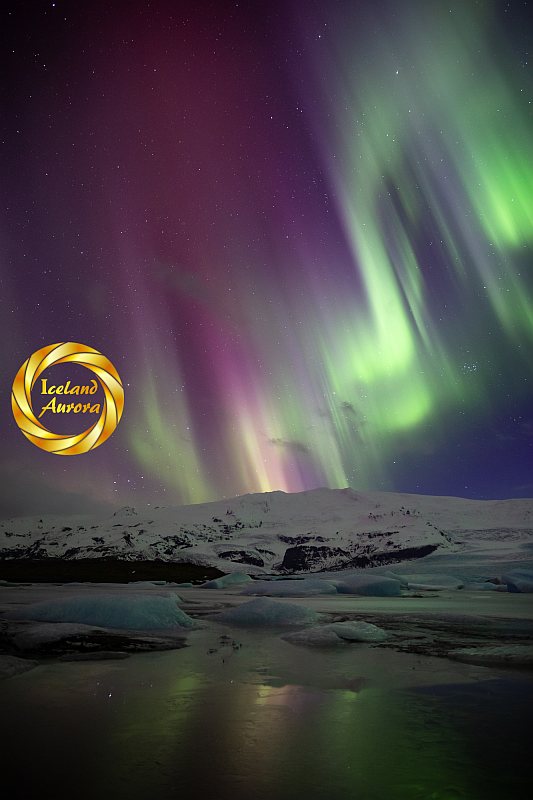
When the Aurora is strong for long periods, you can relax and check the sharpness of each photo. It is possible to experiment with different settings and different compositions.
The shape of the Northern lights is important. When I see strong lines going up into the sky, I turn my camera into portrait orientation. Some of the photos from this session are sold at the Justnanco Gallery, Bristol as Limited Edition prints costing thousands of pounds.
Tours Around Iceland
Mountain River Lagoon
The lagoon is known as Fjallsárlón which means ‘Mountain River Lagoon’. Fjallsárlón is just a 10 minute drive from the famous Jokulsárlón. Fjallsárlón is a much smaller lagoon but it can still have icebergs. The background is dominated by the Öræfi Volcano. This is the second largest volcano in Europe. Öræfi rises above the glacier shelf and sometimes reflects in the glacier lake.
Fjallsárlón is a great location for Northern Lights Photography, although it can be challenging to explore at night. The glacier lagoon is surrounded by huge glacier moraines and the hike down to the edge of the lake is steep and treacherous. The route down to the banks of Fjallsárlón is even more dangerous when it is icy.
Although the Northern lights require a long exposure, the object is often to reduce exposure time as much as possible to achieve a usable exposure and with minimal star trails. A usable exposure is one where you can get the desired print without introducing too much noise into the end result, which happens when you raise the levels of an under exposed photograph. In the field, it is essential to check your histogram to get an accurate idea of exposure. For me, a decent exposure is where the histogram mountain creeps over the half way point.
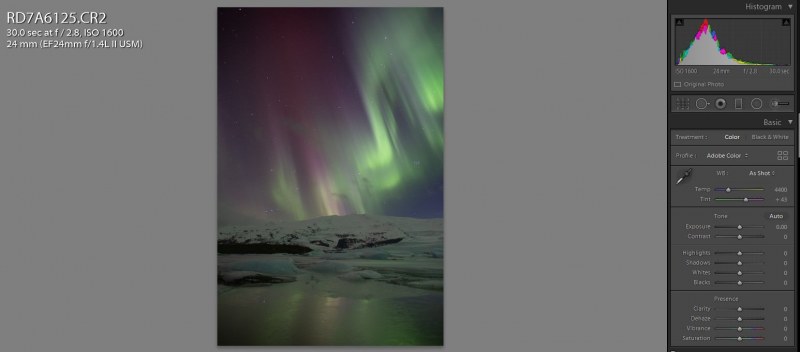
Un-processed image
The image is open in Lightroom before processing. See how the “histogram mountain” on the histogram is creeping over the half way point. The “histogram mountain” should be on the left because it is a night photograph. This tells me that it is a good exposure that will survive lots of processing without generating noise.
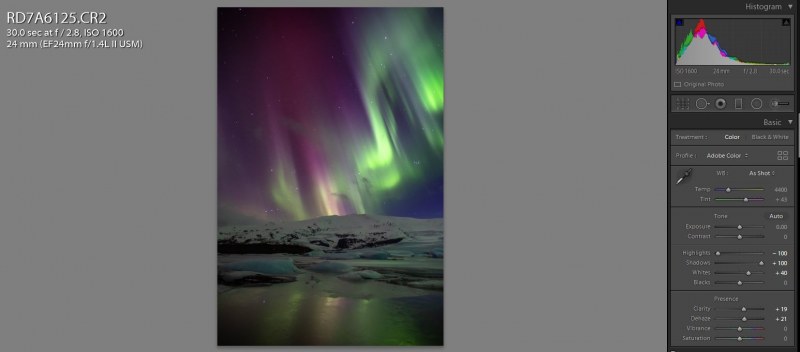
Clarity with flat contrast
This image was processed totally in Lightroom. The shadows were boosted just to separate them from the blacks. The highlights were reduced, just to save small areas of burn out in the brighter pats of the Aurora. Effectively this flattened the contrast of the image, but prepared it for the de-haze and clarity increases.
Noise reduction
A poorly exposed night photograph can be so full of noise that it is challenge seeing the stars. This image has more than enough noise reduction (it would be less noise reduction if I was going to print). You can clearly see the stars, they are nowhere near being erased by noise reduction.
Check out more image focus below…
